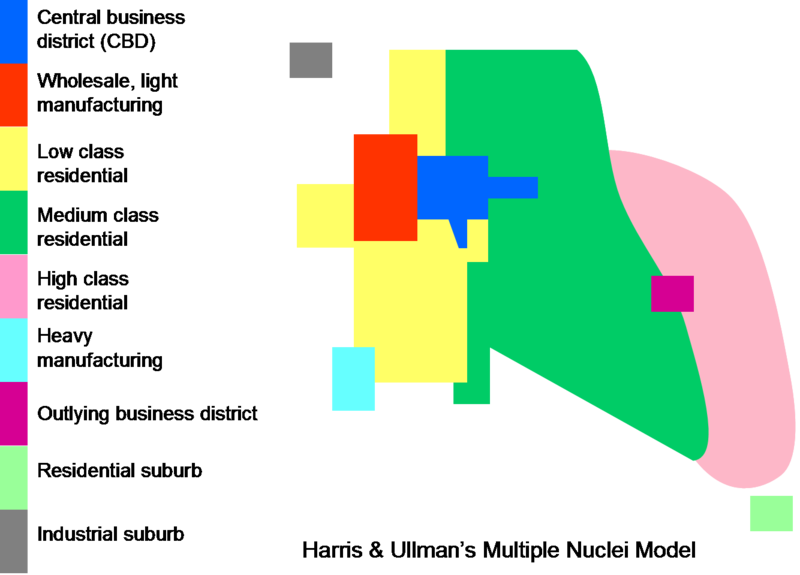A. Importance of Urban green cover in improving environmental standard:
In the last decade many of the developing countries in Asia, East Europe and Africa have seen rapid growth of industrialization, due to which many of the countries have emerged as economic power house. This rapid growth in industrialization has lead to unplanned development of urban areas by large scale cutting of trees, converting agricultural land into human habitation and deforestation. This has affected adversely on general environment and maintaining ecological balance. Rapid migration and increase in population in the urban areas has also lead to large scale spreading of air & water pollution, garbage etc., and also impairing aesthetic value of area / land. Traffic congestion, water shortages, solid waste, and air, water and noise pollution are common noticeable problems in almost all the urban areas since last few years. The escalated urbanization, associated with environmental degradation, has generated a debate on how much urban green space has been lost due to the urbanization process. Integrated means of addressing the ecological and environmental, economic and social concerns are still neglected in the framework of development. As a result, large areas of urban green space are declining rapidly, and causing numerous environmental problems. However, both environmental awareness and environmental legislation (setting of standards etc.) have advanced considerably in recent years, but enforcement is lagging almost everywhere.
Now, it is well recognized that urban green space plays an important role in the social and natural sustainability of a city. An increase of vegetated surfaces in the urban landscape, provide ecological diversity etc. – can help mitigate several negative effects of urbanization on climate, air pollution, since they contribute to the reduction of the structural differences between the urban area and its rural surrounding. The mitigation processes operated by the vegetation take place both through biophysical and microclimatological properties. Urban green cover form essential structural and functional elements that make cities and urban regions more livable places for their citizens. It is thus, key role of improving the quality of urban life as well as environment. Their imperceptible role in arresting pollution, acting as dust-busters, reducing noise pollution by muffling the sounds of urban living, their cooling effect on the city’s temperatures, and how all of this can help keep climate change at bay, are well-known.
Good quality green space enhances the quality of urban life and contributes to wider Government objectives such as improved health, more sustainable neighbourhood renewal and better community cohesion, especially in more deprived communities. Neglected parks attract anti-social behaviour and have the potential to undermine regeneration of deprived neighbourhoods.
Urban green spaces provide a wide range of outputs, however, due to their multi-functional characteristics, the development and management of parks and green spaces is becoming a more and more complex planning issue that needs careful consideration, if green spaces are to be successful places, accepted and appreciated by citizens.
B. Planned urban development is the key to improve city conditions:
Rapid urbanization is transforming life throughout the developing world. Urbanization as a process is in itself is the biggest challenge for cities. It is also irreversible process. Urban planners claim that, urbanization is similar to an inevitable evil. The hub of civilization has been cities since the advent of industrial age. The economic process surrounding it is built on exploitation of nature and resources, killing rural outpost, creating inequalities and driving people to high density spaces – leaving rural spaces more exposed to un-controlled exploitation. Cities continue to grow in a haphazard manner. The city crises are many facets but it is only the clogged roads that are seen to be for what they are: impossible to live with. Issues like having enough water and power and getting rid of waste are considered serious.
The biggest challenges for these cities are increase in human density, which leads to problem of food, clothing & sheltering, sanitation, increasing number of slums and so the environmental degradation. Shortage of proper education, better health facilities, and most importantly a gap in demand and supply chain which contribute towards illegal operations getting started in those areas. In addition, low infrastructural and transport facilities in relation to the population growth make living condition problematic. Urban development is the key indicator for information of development indices. Some of the factors and problems to addressed are summerised as: (a) stable political situation, (b) economic strength, (c) corruption issue and public awareness, (d) skilled urban planners, (e) international relations for cultural sharing, (e) most important of all is willingness in the people and government to support for development.
Planned urban development is the key to overcome such problem of urbanization. Good land planning and infrastructure building in developing countries would help to create a perfect base which can be further nurtured with pollution free environment with sufficient greenery, better delivery of basic services like water and sanitation and finally a society with decent living. Research and demonstration are urgently needed if we are to realize our common dream of dynamic, environmentally and use-friendly cities. It is possible to revitalise depressed areas in ways that satisfy the wishes of residents and businesses. Resources such as land and materials can be reused and recycled. The scope for improving the way that buildings are designed, constructed and disposed of is tremendous. In managing the built environment, sustainability must be incorporated at various levels, from regional planning to individual construction sites. Planners, city councils, designers and urban residents all help to determine how cities develop and what construction methods are used.
Environmental issues play a central role in urban planning. However, in emerging megacities, infrastructure growth often takes precedence over the environment. Solving transportation issues has the highest priority in the cities surveyed, and air pollution is seen as the main environmental issue. The environment also plays a major role in the area of energy issues. Thus, alternative sources of energy will have a bright future in megacities. To meet growing demand for mobility, power, energy and water in the long term, megacities must not only build out their infrastructures and use them more efficiently; they must also proactively manage demand. However, city government experts are aware of the fact that efficiency must be improved significantly.
C. Relevant principles, in relation to sustainable development in cities:
(i) Manage the urban sprawl, that is to limit tendency of growing suburban by increased access to non-developed areas, utilise the potential of the deteriorated areas and un-build plots, develop and enhance development in central neighbourhoods, locate new development in the vicinity of public transport nodes and railway stations, enhance development in inner city-areas, reinforce housing conditions and improve quality of life.
(ii) Innovation of neglected neighbourhoods and mix businesses, services and social groups within the city-structure, particular attention should be drawn to selected neighbourhoods experiencing social problems.
(iii) Manage carefully the cities’ eco-system, particularly regarding public places, green structure, water, energy, waste and noise.
(iv) Develop efficient and environmentally public transport, which can contribute to sustainable mobility.
(v) Establish inter-municipal and inter-city bodies, in order to co-ordinate planning and implementation of measures which cross administrative borders.
(vi) Conserve and refine important cultural heritages, and develop city networks.

























